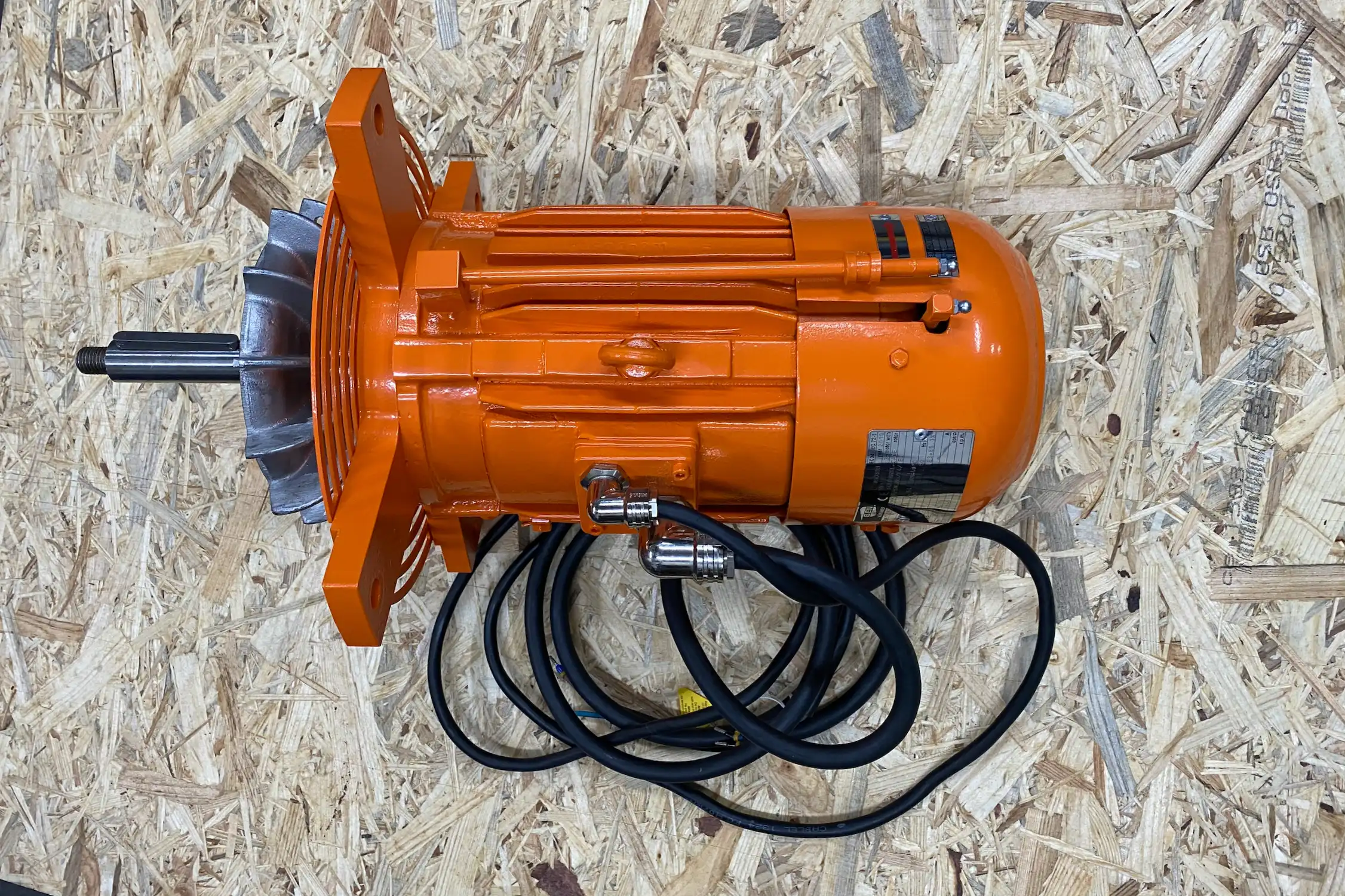
Conventional off-the-shelf motors are unsuitable in many situations. For convection drying systems for building boards, nonwovens, and filter sheets, we supply powerful special motors that can run continuously for 8,000 hours a year in harsh environmental conditions. Further requirements include energy efficiency class IE3, a special shaft, insulation class H, a relubrication device, and specific cable connections.
Products that are manufactured wet, such as plasterboard and construction boards, ceiling and façade elements, nonwovens, insulation boards, and filtration layers, are thermally treated in our customer’s convection drying systems. Air circulation fans are used for drying around 8,000 hours a year, 24/7. The electric motors that drive each individual fan must be extremely robust, powerful, and durable in order to meet the exacting requirements.
However, not all drying systems are the same. There are smaller laboratory dryers, which are equipped with just two fans and corresponding motors, and huge dryer systems 110 meters long, which apply hot air to products on up to 12 floors with 200 fans. These systems dry 3,000 to 4,000 square meters of construction boards or continuous elements, such as filter material, every hour. The products travel through the entire system on all floors on conveyor belts. The laboratory dryer evaporates 20 kilograms of water per hour, while the large-scale system evaporates up to 20 tons of water per hour. Moist air is extracted continuously and fed out of the drying chamber.
The challenge of existing systems
We primarily supply replacement motors for the customer’s existing systems. This presents yet another challenge, as it does not require creating a new concept for scratch, but rather taking all local conditions into account. Requirements range from optimal energy consumption for generating hot air – with energy efficiency class IE3 – to special shafts, insulation class H, a relubrication device, and customized cable connections. The limited available space must also be taken into account. We mimic the tight installation space on our own premises in order to gain insights into temperatures and ventilation.
Two motor sizes – 90 and 132 – and four motor models were ultimately provided. Customers have also required motors that can be switched from four to two poles, which operate at two different speeds (1,500 and 3,000 revolutions), and have a power range up to 7.5 kW, depending on the desired dryer performance.
Smaller drive shaft
One special feature is the 30-millimeter diameter of the drive shaft onto which the fan wheel is screwed. Motor shafts with a diameter of 75 millimeters are standard. Some installation situations also require a conical drive shaft. Cylindrical shafts are standard.
Adapted mains voltage
As drying systems are supplied and motors replaced worldwide, the respective mains voltages of the countries must also be taken into account and motors from BEN Buchele adapted accordingly. Even in Germany, where 400 volts is standard in the industrial sector, a motor design for 500 volts was required for an old drying system. Other BEN replacement motors that were delivered to Japan were designed for 200 volts at a frequency of 50 hertz, as is standard there.
Relubrication device for a long service life
To ensure that replacement motors last a long time, it is important to add a relubrication device for the bearings, as this significantly increases the service life of motors. At insulation class H, the motors are designed for excess temperatures of up to 180 degrees Celsius. Although the ambient temperatures in the drying systems are generally only between 40 and 60 degrees Celsius, process temperatures in the ovens are significantly higher. The high insulation class also takes account of the narrow spaces in which the motors often need to be installed.
Electrical connection
Motor connections are also adapted to the respective drying system. As the usual terminal boxes cannot be installed due to space constraints, a 2-meter cable leads directly out of the motor and is connected to the control cabinet via a terminal box on the outside of the door behind which the motor is installed. Alternatively, the two cables for the motor connection and temperature sensor can run directly from the motor via a Harting connector.
Designing for specific situations
The ambient conditions for replacement motors are always different, so we always take the specific requirements into account in the design. In a drying plant, for instance, a sturdy steel tube was required for running grease through the relubrication device, instead of plastic hoses. In this case, our design engineers completely adapted the motor accordingly.